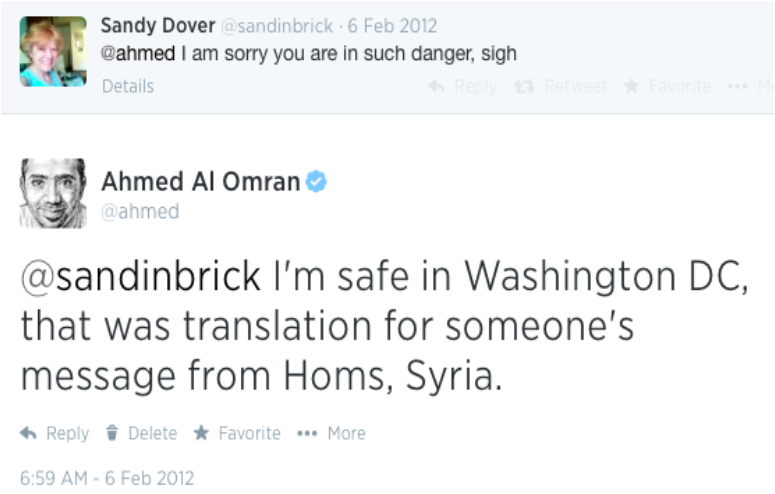Tactic 5: Pick Up The Telephone
During the Middle East Respiratory Syndrome virus outbreak in Saudi Arabia in 2014, I found plenty of information on Twitter and Facebook that contradicted the government’s insistence that the situation was under control. On social media, though, there was a sense of panic. My challenge was to verify the tweets and posts I was reading.
I started by combing through both platforms, looking for doctors and nurses working in hospitals that were treating victims. When I found names, I picked up the telephone and called them. While digital media provided me with leads, traditional technology connected me to firsthand, knowledgeable sources who could speak in detail about the situation in their hospitals. By talking to healthcare workers and hearing their accounts, I had a better understanding of the situation on the ground and presented a more accurate take on the crisis than what Saudis were learning from either the government or social media rumor mills.
On Facebook, you can search specifics using the site’s powerful social graph search. To use it, go to the search box and type a description, such as: “Nurses who work in Jeddah, Saudi Arabia” or “Doctors who work in Riyadh, Saudi Arabia.” You can even focus the search further, as I did by choosing a specific hospital where the outbreak happened: “Nurses who work at King Fahad Hospital in Jeddah.” The site will return a list of users who match this description, and then you can contact them by sending them a Facebook message asking to talk. As for Twitter, you can search the website for keywords and phrases. In my case I started with words that indicated panic about the disease outbreak, and from there started looking for users who worked in hospitals and asked to speak with them.
This takes time and effort, and it doesn’t always yield results. But in the case of the virus story, some health workers did respond to my requests and they offered important context for some of the stories we wrote about the disease for the Wall Street Journal.42
Working Transparently
Be honest. Don’t lie. Attribute properly. These may sound like basic rules every journalist should follow, but they are doubly important in an age when information assaults us from all sides.
Journalists should not distribute information that they cannot verify. If they want to use social media in the process of vetting, they should clearly acknowledge that the information is unverified and they are seeking help or comment from others who may be able to confirm or debunk it. Pay attention to the language used by others when they report the news, and be careful how you convey information, because words matter.43 Be transparent about how you acquired information and how you went about verifying it.
When I was covering the Syrian uprising for NPR in 2012, I found myself correcting some of my followers who thought I was tweeting from battlefields in the Middle East, asking me about specific things or wishing me to stay safe.44 “Thanks,” I would reply to them, “but I’m actually tweeting from the comfort of my office in Washington, D.C.”

image
Being transparent about your location and sourcing is essential for credibility and trust. Moreover, journalists should make it easy for the audience to find out more about them and their backgrounds by providing links to their bios and previous work.
Finally, as a reporter, don’t be afraid to show your human side on social media. Tweeting a link to a music video you like or posting a photo you took during a walk on a sunny summer day reminds your audience that you have a life beyond work, just as they do. It can help them relate to you, and to your more serious work.